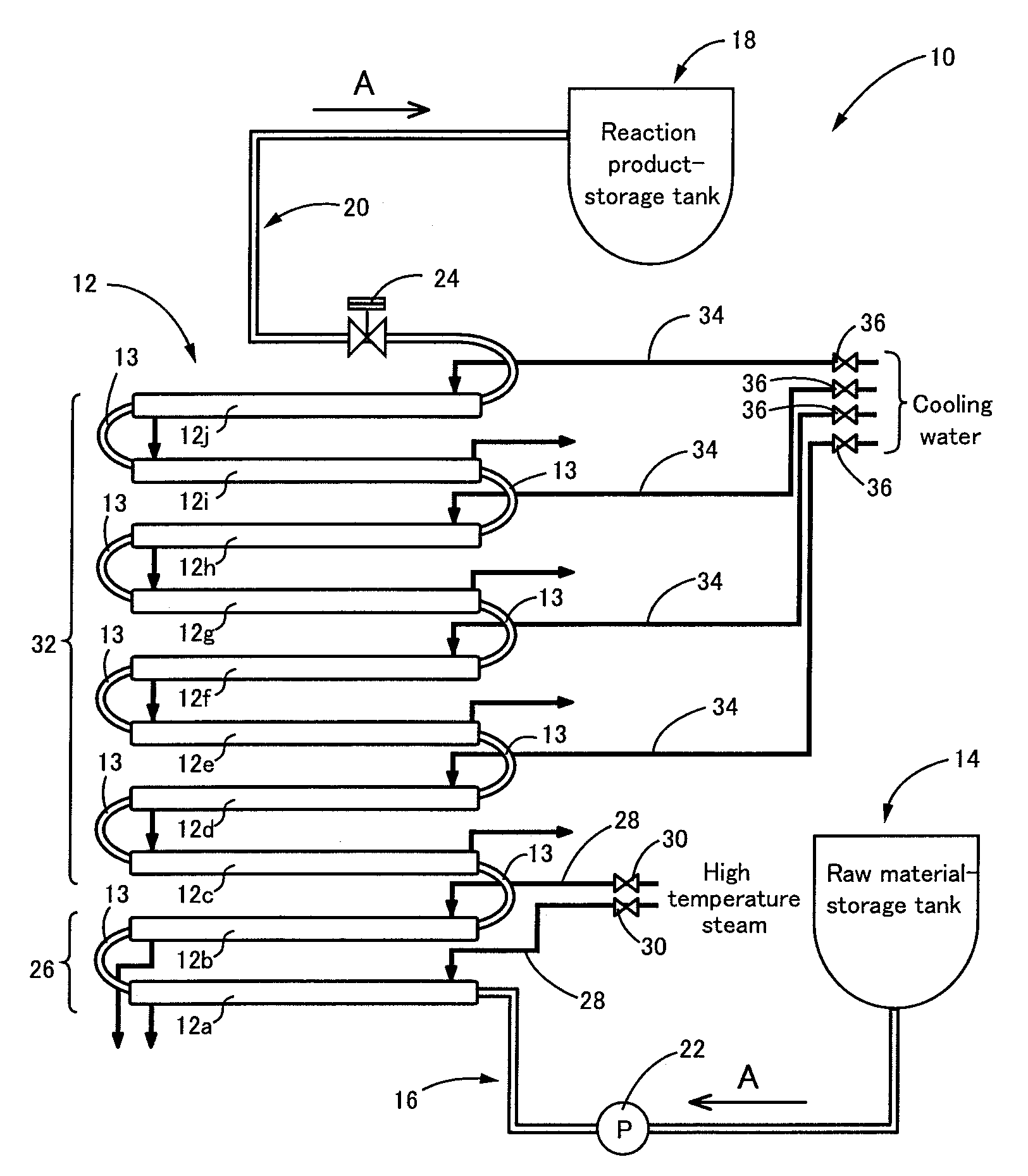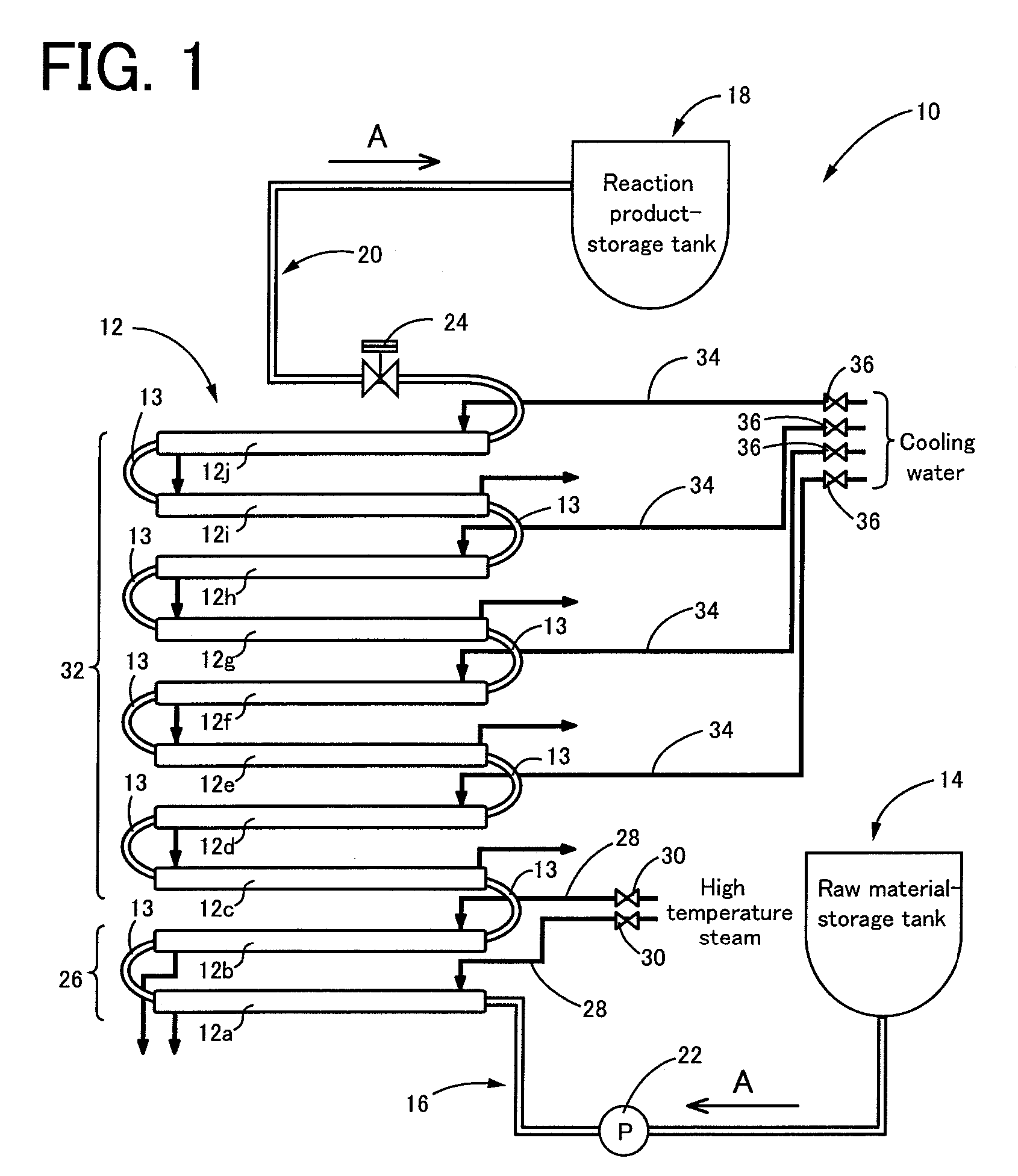Process for producing phenolic novolak resin
- Summary
- Abstract
- Description
- Claims
- Application Information
AI Technical Summary
Benefits of technology
Problems solved by technology
Method used
Image
Examples
examples
[0074] To further clarify the present invention, there will be described some examples of the present invention. It is to be understood that the present invention is not limited to the details of the following examples.
[0075] At first, there was prepared a continuous reactor (10), which had a structure as shown in FIG. 1. As a tube diameter (internal diameters) of a reaction tube (12), there was adopted 25 mm or 20 mm, as shown in TABLE 1 below. Also, there were respectively allocated a thermometer and a manometer at an outlet of each pipe (12a˜12j) which constitutes the reaction tube (12) and an inlet of a pipe (12a) located at the uppermost stream side of the tube, so that a temperature of a mixture flowing in the tube and a pressure of inside the tube could be measured. Meanwhile, as raw materials, there were respectively prepared at least one of phenols: a phenol, at least one of aldehydes: 47% aqueous solution of a formaldehyde, and an acidic catalyst: oxalic acid.
[0076] Also...
example 12
[0089] In order to determine an effect of a static mixer positioned within the reaction tube (12), there was conducted an experiment as described below. Namely, in Experiment 1, there was used, as the reaction tube (12), a reaction tube, in which a static mixer including six elements (a spiral mixer available from TAH Industries, Inc., U.S.A.) was positioned at an inlet of each of the pipes (12c˜12j) which constitutes the temperature control zone (32). Meanwhile, in Experiment 2, there was used a reaction tube at which no static mixer was positioned.
[0090] Similar to the above Example 1, the phenol, the 47% aqueous solution of formaldehyde, and the oxalic acid were introduced in the raw material-storage tank (14), so as to fulfill the ratio as shown in TABLE 2 below, and were sufficiently stirred within the raw material-storage tank (14), so as to obtain an uniform mixture. Afterwards, the pump (22) was operated and the mixture within the raw material-storage tank (14) was supplied...
PUM
| Property | Measurement | Unit |
|---|---|---|
| Temperature | aaaaa | aaaaa |
| Temperature | aaaaa | aaaaa |
| Percent by mass | aaaaa | aaaaa |
Abstract
Description
Claims
Application Information
 Login to View More
Login to View More - R&D
- Intellectual Property
- Life Sciences
- Materials
- Tech Scout
- Unparalleled Data Quality
- Higher Quality Content
- 60% Fewer Hallucinations
Browse by: Latest US Patents, China's latest patents, Technical Efficacy Thesaurus, Application Domain, Technology Topic, Popular Technical Reports.
© 2025 PatSnap. All rights reserved.Legal|Privacy policy|Modern Slavery Act Transparency Statement|Sitemap|About US| Contact US: help@patsnap.com


